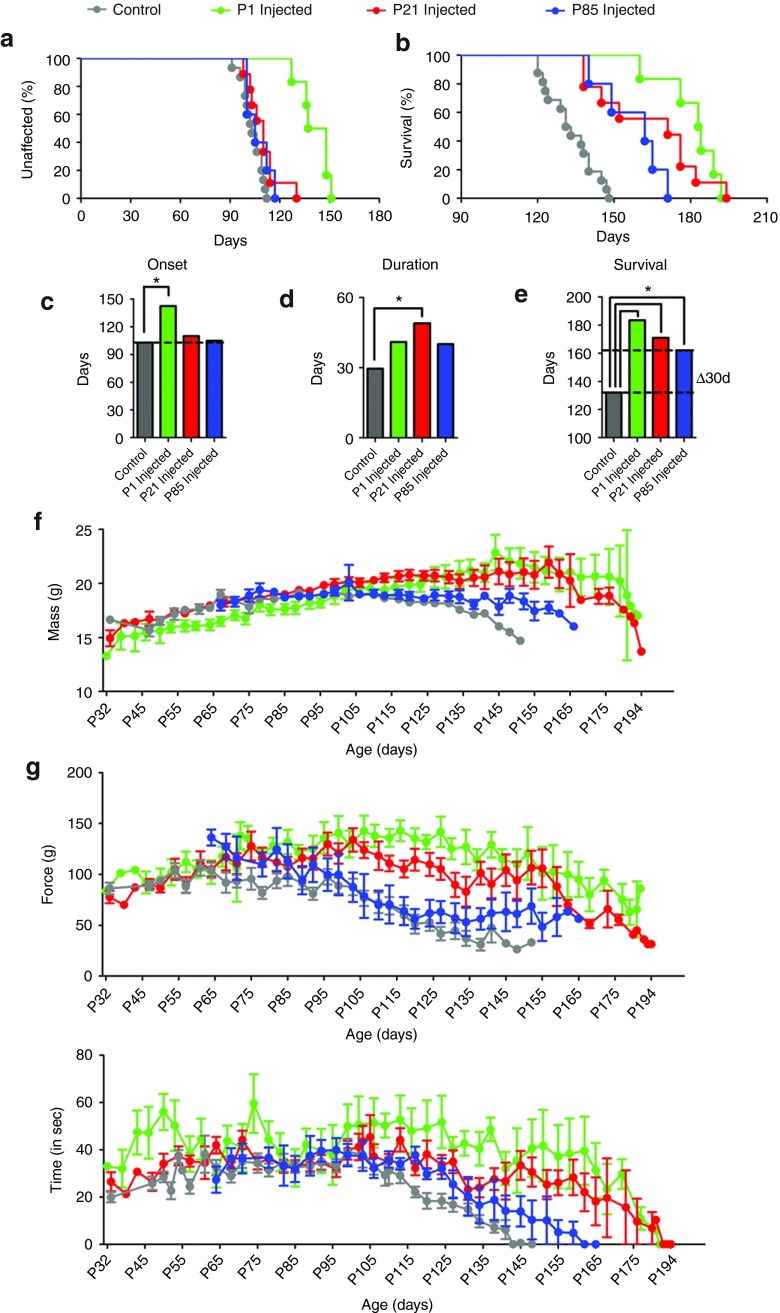Figure 3.
Intravenous delivery of AAV9-SOD1-shRNA improves survival and motor performance in SOD1G93A mice. SOD1G93A mice received a single intravenous injection of AAV9-SOD1-shRNA at P1 (n = 6, green), P21 (n = 9, red), or P85 (n = 5, blue). Treated mice were monitored up to end stage and compared with noninjected control SOD1G93A mice (n = 15, gray). (a,c) AAV9-SOD1-shRNA injection into P1 SOD1G93A mice significantly delayed median disease onset 39.5 days compared with control animals (uninjected: 103 days; P1: 142.5 days; P < 0.05). Injection in P21 (red) or P85 (blue) ALS animals had no effect on disease onset (P21: 110 days; P85: 105 days). However, AAV9-SOD1-shRNA administered at P1, P21, or P85 all significantly extended median survival (b,e) (uninjected: 132 days; P1: 183.5 days; P21: 171 days; P85: 162 days; all comparisons to control P < 0.001). The P21 group had a significant extension in median disease duration (d) indicating a slowing of disease (uninjected: 29.5 days; P1: 41 days; P21: 49 days; P85: 40 days; Wilcoxon signed-rank test, P = 0.06, P = 0.01, and P = 0.12, respectively). (f-h) P1- and P21-treated animals maintained their weights, had better hindlimb grip strength and rotarod performance as compared with age-matched controls, indicating treated animals retained muscle tone and motor function during their prolonged survival. Lines between bars in (c–e) indicate statistically significant differences. *P < 0.05. P1, postnatal day 1; P21, postnatal day 21; P85, postnatal day 85.

